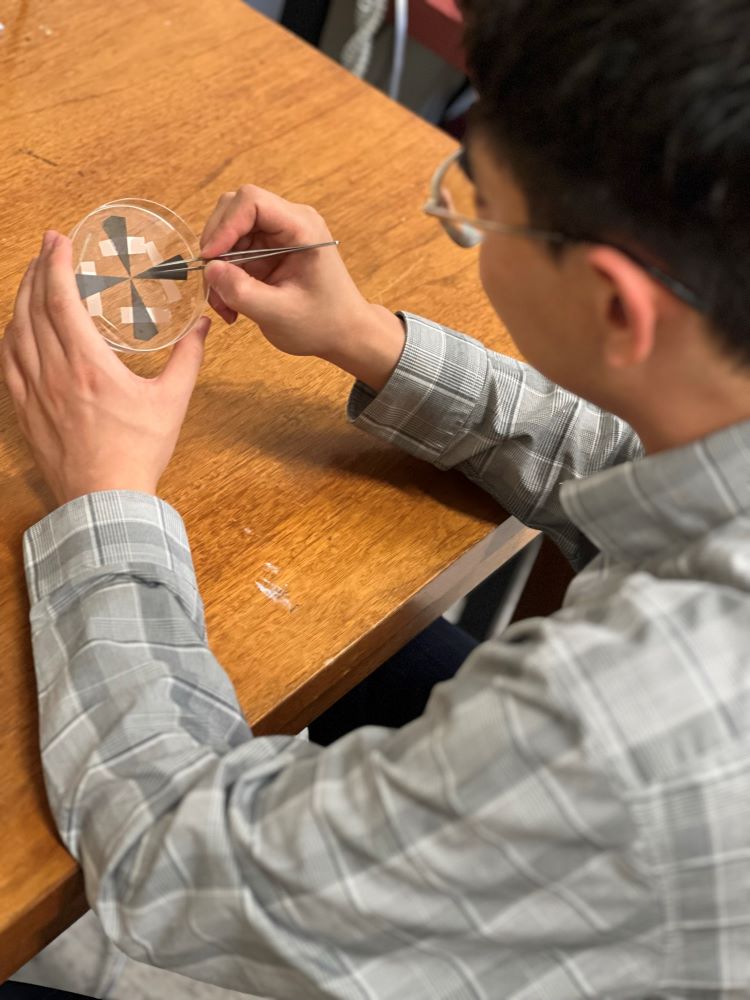Even Xian Wang agrees that sometimes his research sounds like science fiction. After all, he works with micro and nano robots with a focus on their application in medicine. His most recent research has involved injecting swarms of these microrobots — each one smaller than a single cell, measuring no more than one tenth of the diameter of a strand of hair — into hard-to-reach tissues so that they can seek out and treat disease.
“It really was a sci-fi idea at the beginning,” he says, referencing the 1966 film The Fantastic Voyage which tells the story of a submarine crew that shrinks itself to a microscopic size so the team can enter and repair damaged brain of an injured scientist. “But that research is happening now. Here we are.”
While early microrobotics work has largely focused on drug delivery, Wang is more interested in whether the technology can be used to treat ailments physically. Most recently, he has been working on using the robots to seek out and apply mechanical torque to tumours — ideally eliminating them by physical means rather than shrinking them with drugs, which can have challenging side effects. The microscopic robots also help researchers to better understand the nature of various tumours, investigating for factors like how stiff or soft they feel.
“Now we can get inside tumours and see how they feel so that we can understand them and the environment better,” he explains from his office in McLaughlin Hall. Too small to carry cameras, the miniscule robots are controlled externally using magnetic fields, like with MRI technology.

Wang joined the faculty in the Department of Mechanical and Materials Engineering in March 2023, after earning his PhD in Mechanical Engineering with a collaborative specialization in Biomedical Engineering in 2020. In between, he did post-doctoral research at Toronto’s Hospital for Sick Children where his worked explored using nanorobots to destroy brain tumours in a bid to expand treatment options for cancer patients.
Working with the brain tumour research group at the hospital helped Wang better understand how mechanical means could be used to attack tumours. “There are not many people doing this kind of work,” he says. “We find the research unique.” At the same time, he says, it is not completely novel. “Biologists have found that tumours are responsive to mechanical stimulation. Working with interdisciplinary robotics, we will harness the power of both a knowledge of biology and of engineering technology to advance the treatment further.”
Wang, who earned his undergraduate degree in China, says that what compels his research is the potential to help people. He is particularly buoyed by the collaborative nature of his work, drawing on expertise across research areas to save lives. “It really requires lots of expertise from a lot of different subjects,” he says. “While most expertise is from the medical side when it comes to treating tumours, we also need to understand the mechanical side of the disease.”
As he settles into his new role at Queen’s, Wang is now focusing on how to extract nanorobots once they have been injected into tissue, as well as on ways to make them more compatible with biological environments, including the potential to make them biodegradable inside the body.
“Right now, we are taking our first steps to prove the methods are effective,” he explains. “And after that, we will be considering how to better control for safety and side effects. It is definitely a high-risk, high-rewards research area,” he adds.
Depending on how things proceed, Wang is hopeful the technology will be able to be deployed for use in treating disease in humans. In the meantime, he is intent on training as many students on the joys of pursuing interdisciplinary research straddling engineering and medical research, all in a bid to make the world a better and healthier place.
“Doing this kind of career does require something inherently in your heart that you want to pursue,” he says with a smile. “It’s an inner calling.”
